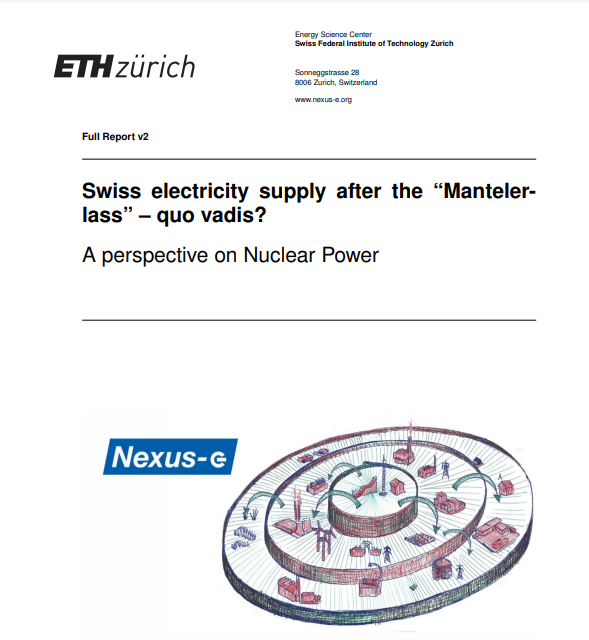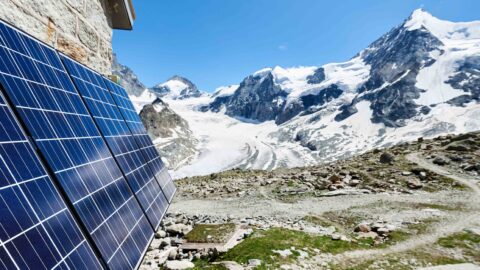
Author: Marius Schwarz
In this study, we assess the role of the existing and new nuclear power plants for the Swiss electricity system. We use the Nexus-e modeling platform to develop three scenarios with different operating time of existing and construction of new nuclear power plants.
New Nexus-e management! Jonas joins Nexus-e as the new project manager
Jonas Savelsberg joined the Energy Science Center at ETH Zurich as a senior project manager for Nexus-e in August 2023.
Nexus-e is growing! Matthieu Boubat joined as new scientific assistant.
Matthieu Boubat joined the Energy Science Center (ETH Zurich) in July 2023 as a scientific assistant. He is working on scenario developments for various projects at ESC and collaborating toward making the Nexus-e platform open source.
Assessing the Feasibility of Scenarios for the Swiss Electricity System
The company Helion, the Swiss industry association Swissolar and National Councilor Jürg Grossen have each developed roadmaps for the Swiss electricity system up to 2050. These scenarios are characterized by a rapid and strong expansion of photovoltaics (PV) to compensate for the phase-out of nuclear energy and to cover a large part of the increasing electricity demand. In this study, we investigate the feasibility of these Roadmaps and compare them with the “Business as usual” (“Weiter Wie Bisher”, WWB) scenario of the Energy Perspectives 2050+.
Vehicle-to-grid in Switzerland
The electrification of the transport sector will have a substantial impact on the Swiss electricity system. Vehicle-to-Grid (V2G) – the bidirectional interaction between electric vehicles and the grid – is one way of leveraging the battery capacity to provide flexibility for the electricity system. In this study, we make a first estimate of the potential impact of V2G on the Swiss electricity system. We hereby assume that V2G is used for balancing supply and demand on a system level.
Nexus-e welcomes Desiree de Ferrars as new MSc Student
Désirée is currently a MSc student in Environmental Sciences at ETH Zurich. She will conduct her Master’s thesis on “The role of solar photovoltaics in the alps for the Swiss electricity system”.
Her analysis will focus on conducting literature and developing GIS datasets. Also including alpine PV in the Nexus-e databare will be part of her Master’s Thesis.
Check out our contribution to the October edition of the VSE Bulletin!
(in German only) Mit dem russischen Einmarsch in die Ukraine wurde klar, wie abhängig die Energieversorgungssicherheit der Schweiz von den Entwicklungen im Ausland ist. Um diese Abhängigkeit zu reduzieren, sind diverse technische, politische, regulatorische und gesellschaftliche Massnahmen nötig. Ein Energiesystemmodell berücksichtigt diese nun. Link to the article!
Arijit joins the Nexus-e team!
The Nexus-e team is very proud and pleased to welcome a new team member! Arijit Upadhyay joined the Energy Science Center (ETH Zurich) in July 2022 as a scientific assistant. He is working on scenario developments for various projects at ESC and collaborating toward making the Nexus-e platform open source. Previously he obtained a Master’s degree…
Alternatives to the prevailing PV policies in Switzerland
Electricity generated from rooftop photovoltaics systems have the largest renewable potential in Switzerland and are expected to contribute substantially to the future Swiss electricity mix. However, so far, these systems are behind their expectations, which is why an update of PV policies is discussed. In this project, we investigate an alternative to the prevailing support scheme. What we call the “customer-oriented feed-in tariff” remunerates solar electricity injected to the grid with a percentage of the retail electricity price, the price electricity customers are paying for electricity consumption.
Can solar PV in the alps help Switzerland’s energy transition?
Dr. Marius Schwarz contributed to the study “Alpenstrom jetzt!”, in which four researchers from different fields outline their perspective on alpine PV in Switzerland. Photovoltaic (PVA) systems in alpine areas could make an important contribution to building-up of domestic winter electricity production, which is crucial for the security of electricity supply in Switzerland. Alpine PV generate significantly more…












